Design of a stretch ceiling in the living room: types, materials, texture
Stretch ceilings adorned buildings in Ancient Egypt - the damp linen cloth stretched over the top of the room shrunk and stretched when dried, resulting in a flat surface. Later, silk fabrics were used for this purpose, and their color was chosen to match the color of the walls and furniture. Modern stretch ceilings appeared a little less than half a century ago, and since then have become very popular, as they have a very diverse design and wide application possibilities.
Stretch ceilings can be divided into two types:
- Filmmade from pvc film. They have seams, since the PVC fabric has a small width, and individual fragments have to be welded together. They have rich expressive capabilities, since you can apply any pattern to them, and, in addition, give any texture: glossy, matte, “fabric”. Minus: afraid of low temperatures and accidental punctures, cuts.
- Seamlessmade from a fabric mesh impregnated with a polymer. The material can be soundproof, as well as translucent - and in this case, the lamps placed behind it will give a beautiful diffused light, which opens up new possibilities for the design of the premises. Withstands low temperatures, does not sag over time, provides full gas exchange.
According to the texture of the canvas for suspended ceilings are divided into:
- Glossy. They have "mirror" properties, reflect light well and thereby are able to increase illumination, as well as visually increase the living room, which is widely used in design;
- Matte. Suitable for most interior styles, as they can be painted in any tone and do not create additional shine.
- Satin They have a surface resembling fabric, which allows the ceiling to look stylish and expensive.
Important: Glossy canvases increase illumination, and, in addition, “double” lighting fixtures, which should be taken into account when developing a lighting design.
In addition, the canvas can be pulled to the ceiling at different levels. This complicates the design, gives expressiveness and individuality, and also allows you to hide pipes, air ducts, wiring under the canvas. In accordance with the number of levels, stretch ceilings are divided into:
- single-level;
- two-level;
- multi-level.
Duplex stretch ceilings in the living room - the most common solution. They have the most flexible expressive capabilities, without overly complicating the design of the room. In addition, by arranging various patterns and textures in two levels, the effect of expanding the space and increasing the height can be achieved, which is especially desirable in the living room, which is the main room in the house.
Stretch ceilings in the interior of the living room: styles
Stretch ceilings in the living room can have various design options, so their choice is very wide, which allows you to choose the right solution for any style of design of the living room.
- Classic. The matte surface of the canvas in combination with traditional colors - white, beige, light gray will create a magnificent backdrop for the design of classic living room interiors. It is possible to use two-level structures of suspended ceilings and apply to a higher part of the drawings repeating the ceiling frescoes of old interiors.
- Modern. Complex "plant" lines, clear boundaries, a combination of active colors - all these features of the style can be reflected in the ceiling structures.
- Country. Single-level matte ceilings of the same tone - the best choice for the "folk" styles of room design.
- Ethnicity. African, Indian and other exotic interior design options can also use stretch ceilings. In this case, they can be combined with wooden ceiling panels, complemented by national ornaments, complex decors.
- Minimalism. Solid ceilings, white or light beige, blue, gray tones, located on the same level, are the best suited to this laconic style. They can be either matte or glossy, depending on the design tasks in the design of the living room.
- High tech. Glossy canvases, as well as canvases with a “metal” finish, accentuate the chosen style and will harmoniously look with the rest of the decor.
Stretch ceiling in the kitchen-living room
Quite often, in open-plan apartments, the living room is combined in one volume with the kitchen - this is convenient, visually the living room seems more spacious. In this case, the main task of the design is to visually separate the area where food is prepared and the living area. Usually this problem is solved using the color and texture of finishing materials - paint or wallpaper for walls, as well as floor and ceiling coatings. Often the floor in the kitchen area is raised to the podium or, conversely, lowered relative to the floor in the living room.
The use of suspended ceilings will help emphasize zoning, and this can be done in different ways.
- Color. The ceiling can be placed on one level, but made of different colors: for example, above the living room “part” it will be traditional white, and above the kitchen - to the color of kitchen furniture.
- Height. The location of suspended ceilings at different levels will also help emphasize zoning in the living room combined with the kitchen. In this case, the distinguished zone can have either a simple geometric shape or a complex, rounded one. A higher level, as a rule, is located in the living room area, a lower level - in the kitchen area, which is quite justified, because it is there that you usually have to hide air ducts and pipes.
Stretch ceilings in the kitchen-living room are usually made of PVC, as caring for them is easier than fabric ones, and ceilings in those rooms where they cook food get dirty faster.
Living room lighting with stretch ceilings
The design of the light scheme for tension structures has some features that take into account the properties of the canvas from which the ceilings are made. PVC film has high strength, but softens when the temperature rises, which is used during its installation.
However, during operation, heat-generating luminaires can lead to deformation of the canvas and its ugly sagging, so it is recommended to use energy-saving lamps, including LED ones. The film does not allow to mount chandeliers and other lighting devices directly to it, the fasteners must be equipped before installation, and a hole should be made in the canvas in the places where these fasteners are located.
Standard lighting options are as follows:
- Central. A chandelier in the geometric center of the room provides general lighting. Usually used in design with floor and wall lights.
- Point. Lamps are placed in different areas of the living room in accordance with the scheme provided for by the design of the living room. They use energy-saving lamps that consume little energy and almost do not emit heat that can deform the ceiling.
- Contour. LED backlighting can emphasize the contours of a multi-level ceiling or create the impression of a “soaring” ceiling if you attach it to the ledge, which visually makes the room higher. The tape provides “cold” light without distorting the canvas, which can also be of any color, and change according to the mood of the apartment owners.
- Raster. Luminaires equipped with reflective plates give very bright lighting, and are appropriate only in large rooms.
The combination of these options in various combinations allows you to create comfortable, functional and beautiful lighting schemes, individual for each living room.
Lamps for suspended ceilings in the living room
The most suitable luminaires are spotlights - they provide uniform illumination, practically do not heat up, and allow you to effectively highlight functional areas, while also saving energy.
Spotlights can be any in shape and size, everything is determined by the design of the room. Chandeliers remain an important decorative element of the living room interior, but their choice in the case of stretch ceilings has its own characteristics. If the lamps in the chandelier are located close to the ceiling, the shades should be directed sideways or down to reduce the heat load on the canvas.
Photo of suspended ceilings in the living room
The photos below show examples of the use of suspended ceilings in the interior of a living room.
Photo 1. The minimalist interior is decorated with fantasy pendants reflected in the gloss of the ceiling.
Photo 2. The chandelier of original design accentuates the main area of the living room - the sofa.
Photo 3. The sophisticated shape of the ceiling gives the living room design a personality.
Photo 4. The dark central part of the ceiling with a glossy effect increases the depth of the interior and gives it volume.
Photo 5. Two-tone ceiling enlivens the design of the classic interior and gives it dynamism.
Photo 6. A two-level design emphasizes rectangular design motifs.
Photo 7. Mirror cloth visually increases the height of the room.
Photo 8. The central zone is highlighted by the glossy surface of the ceiling.
Photo 9. The matte fabric creates the effect of a classic bleached surface.

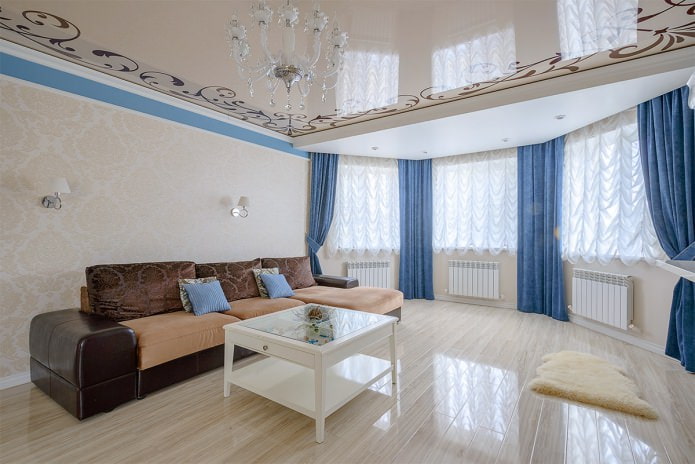
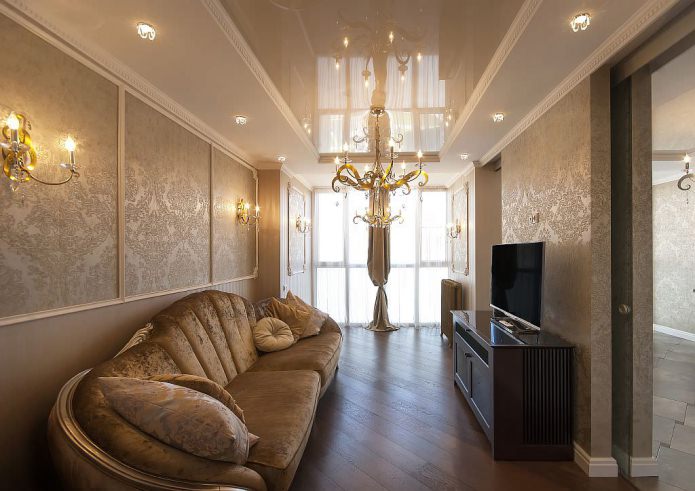
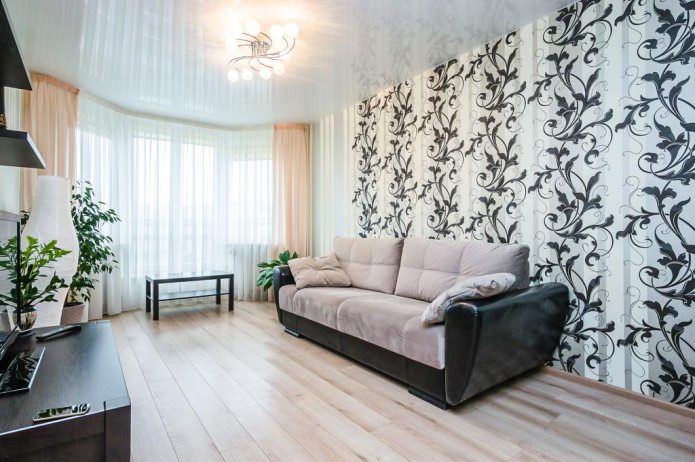
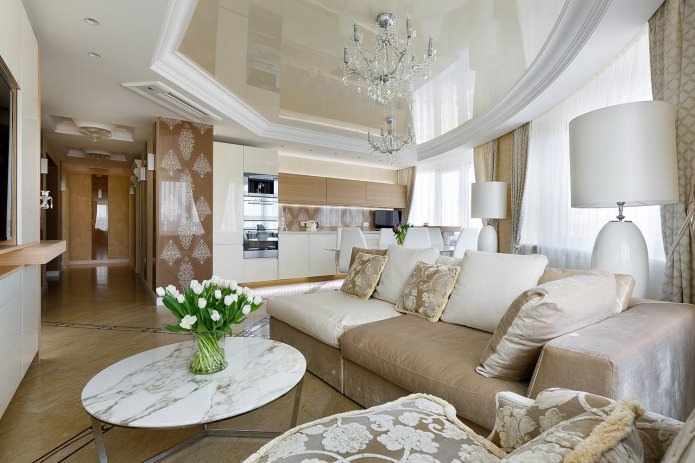
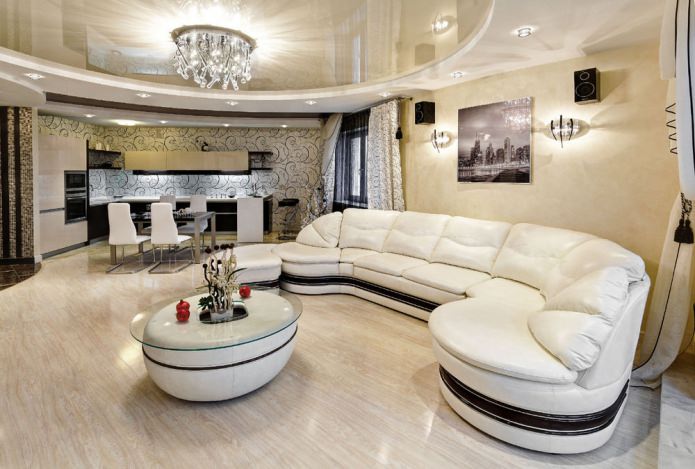

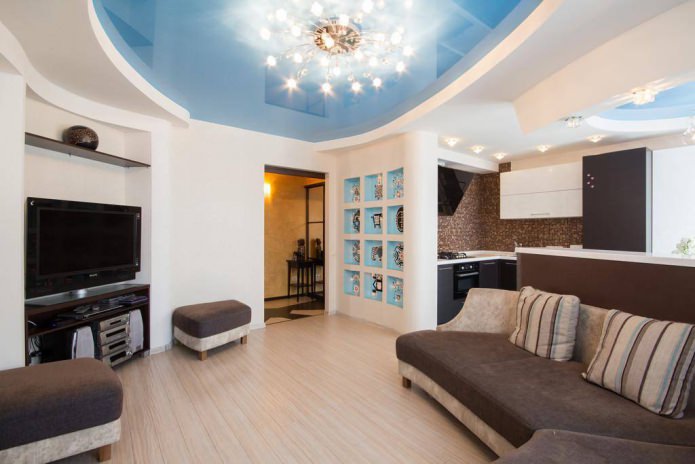
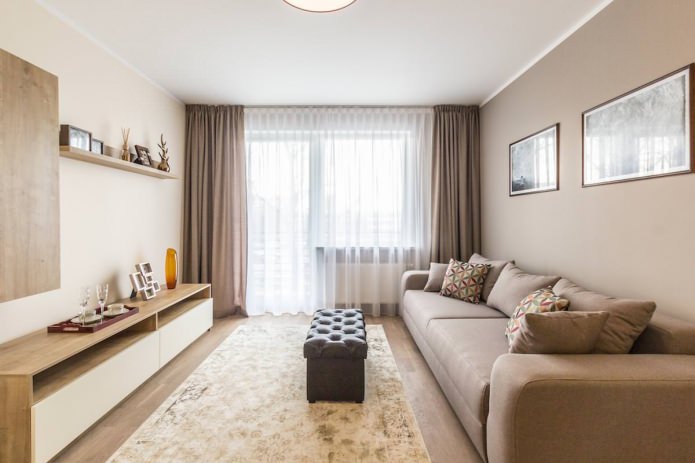

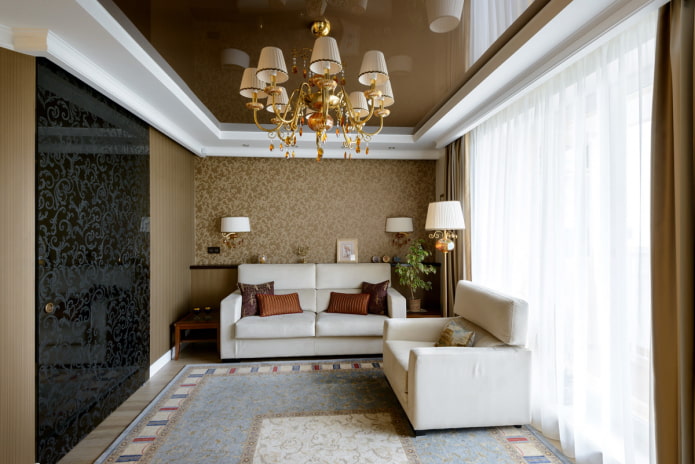
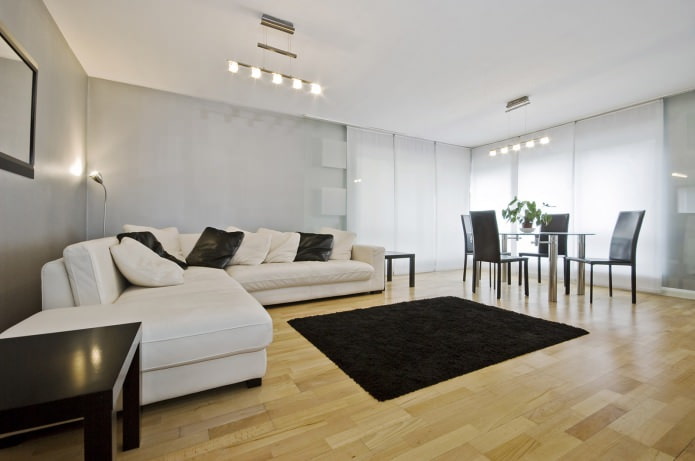
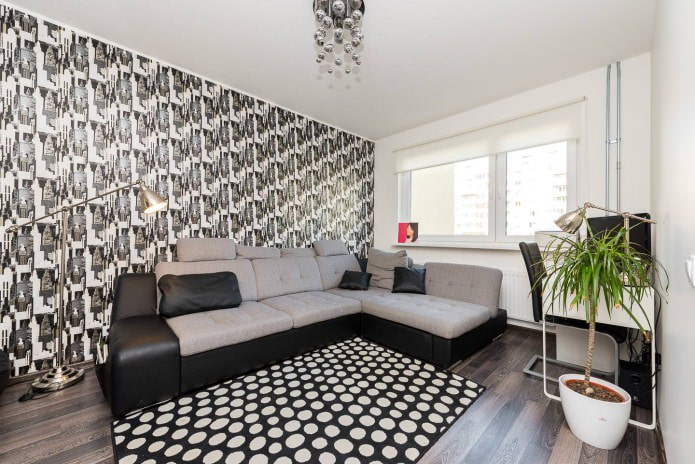
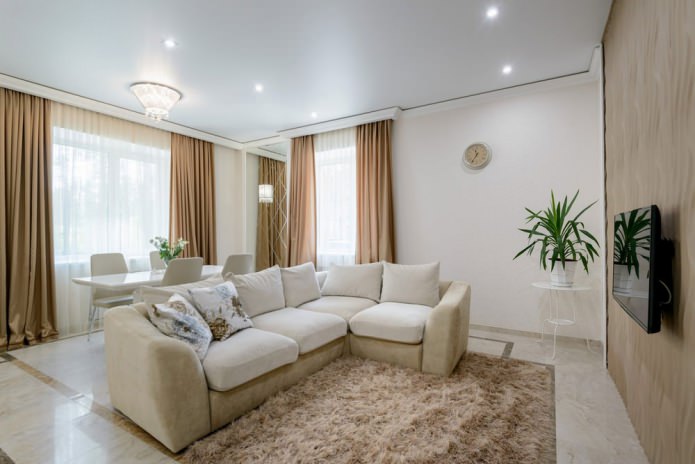
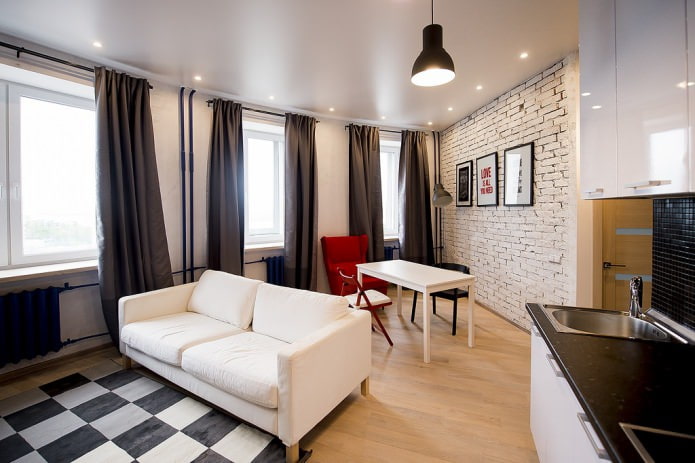
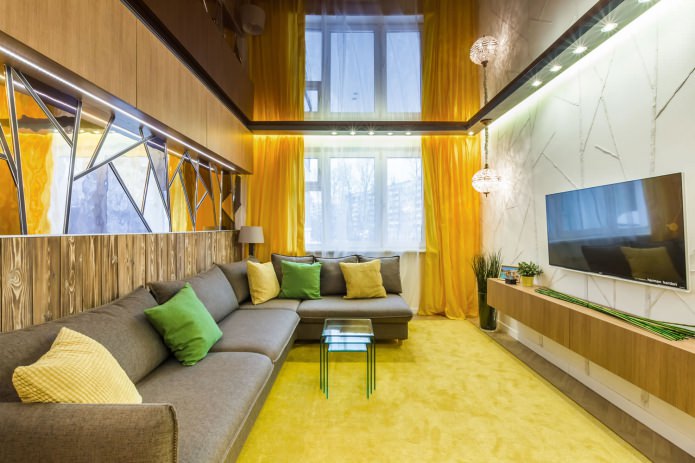
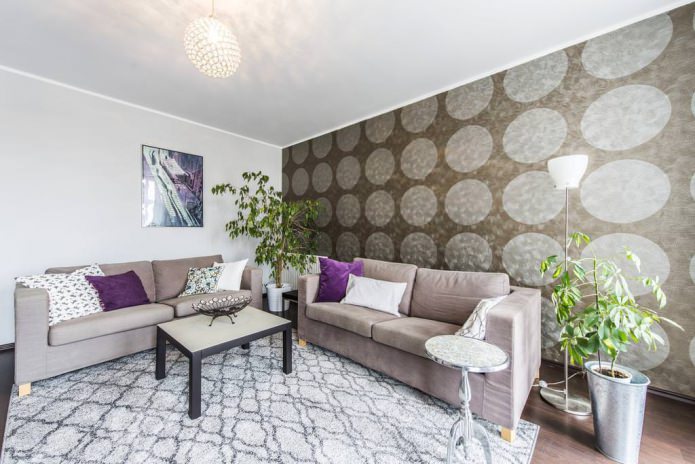
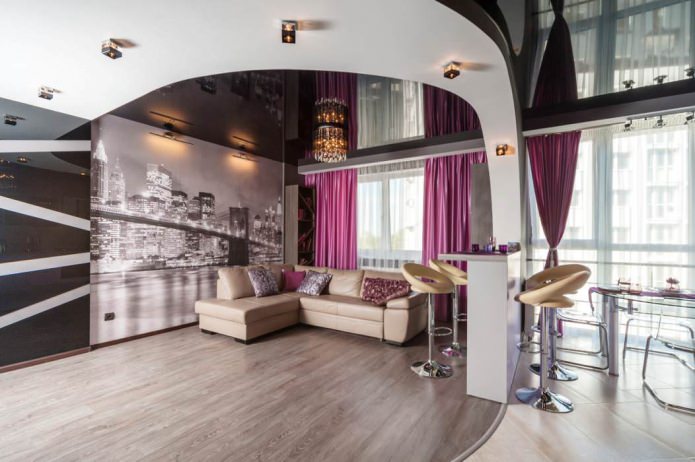
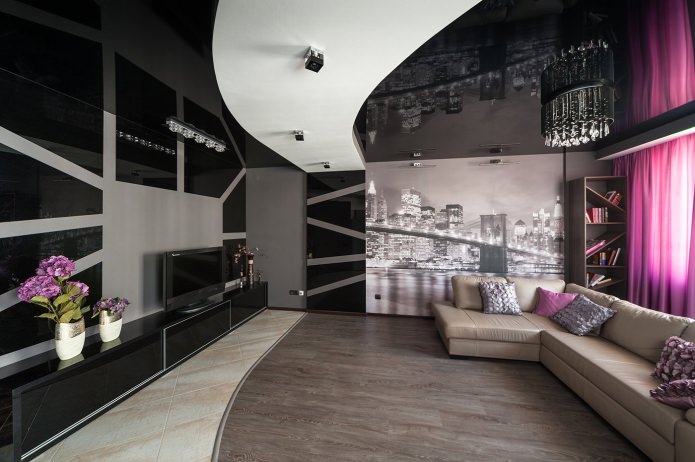
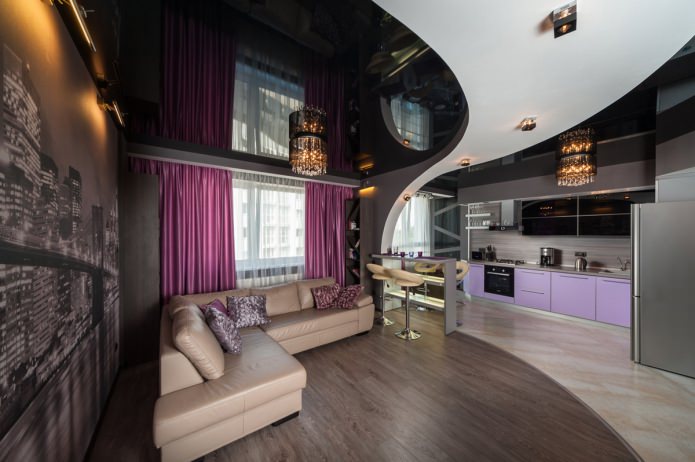
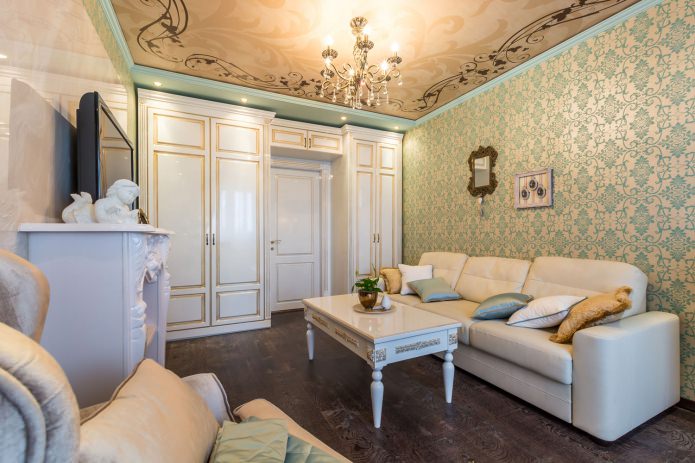
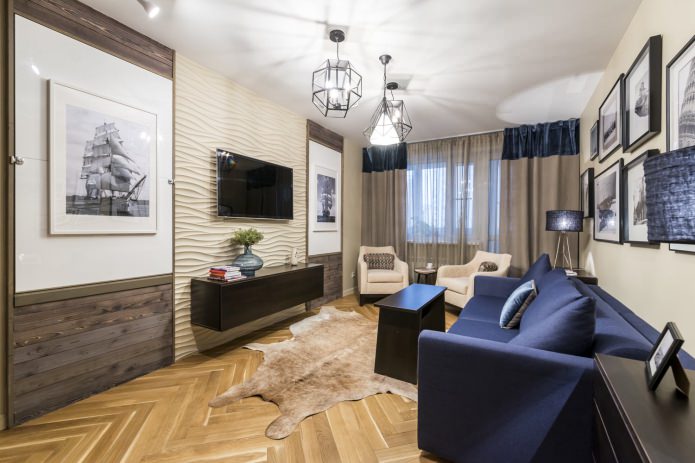
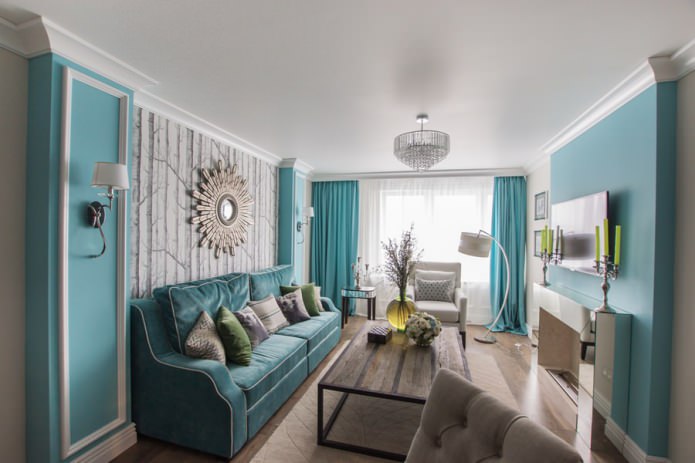
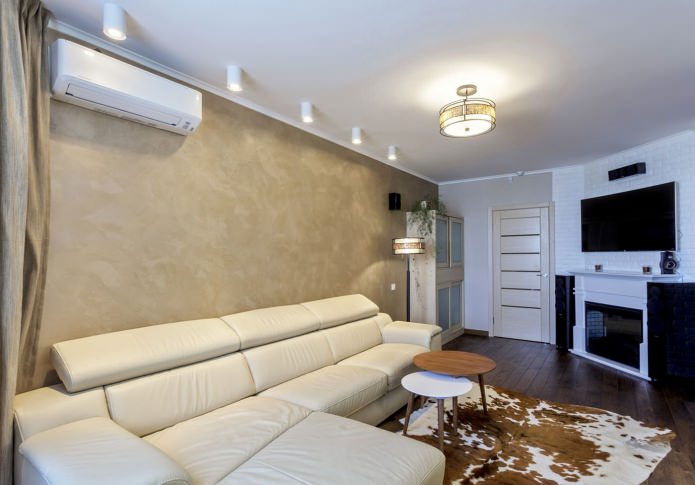
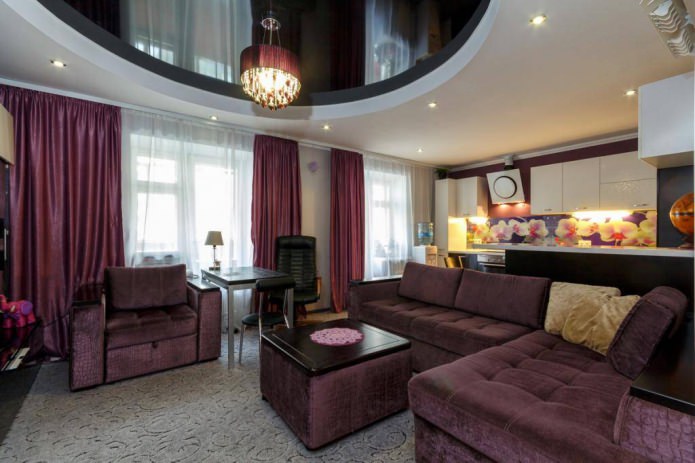
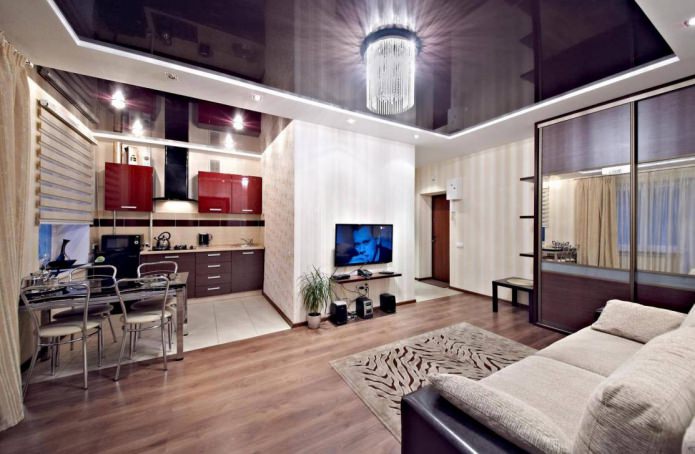
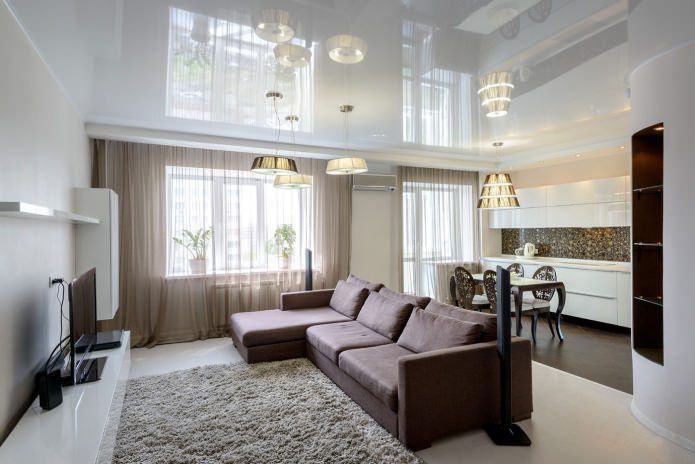
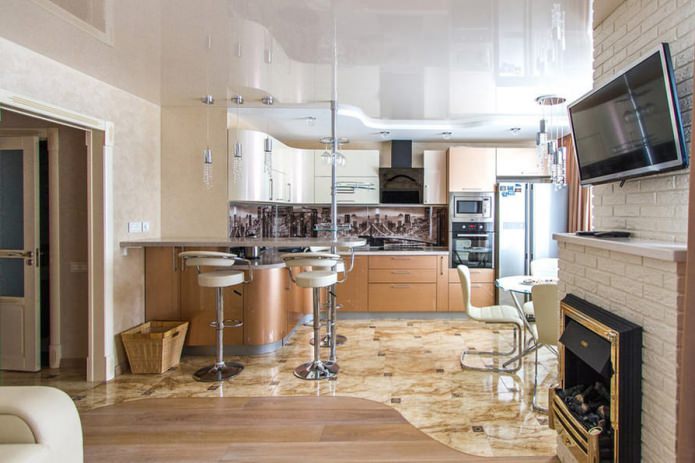
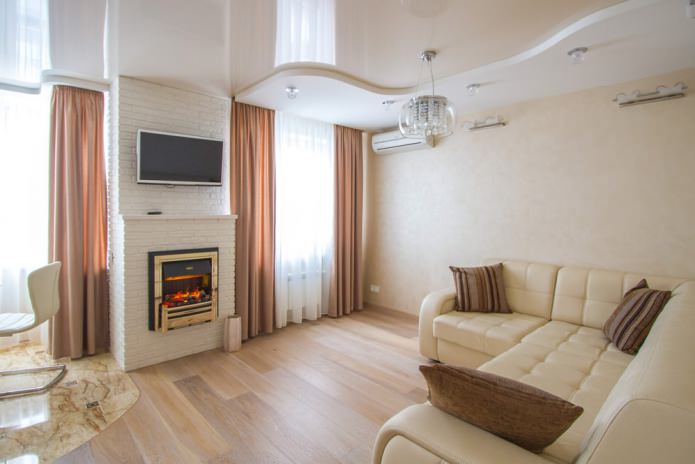

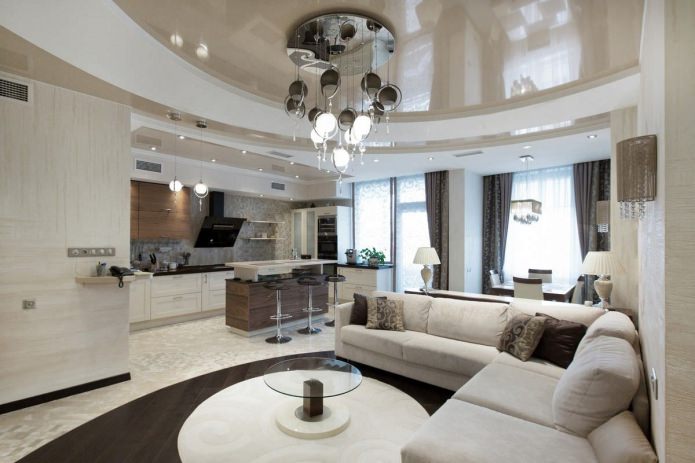
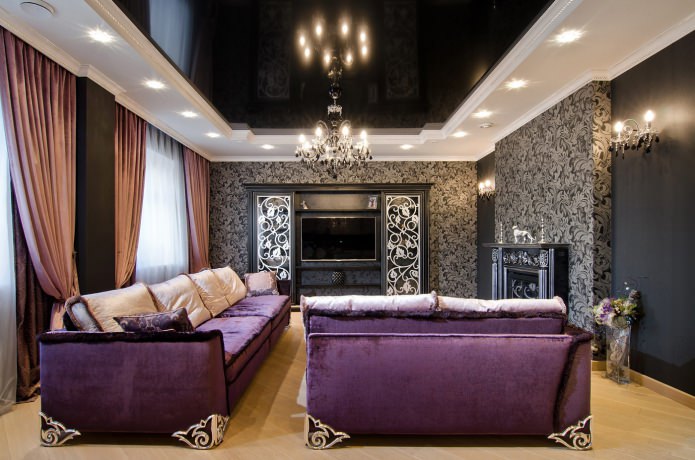
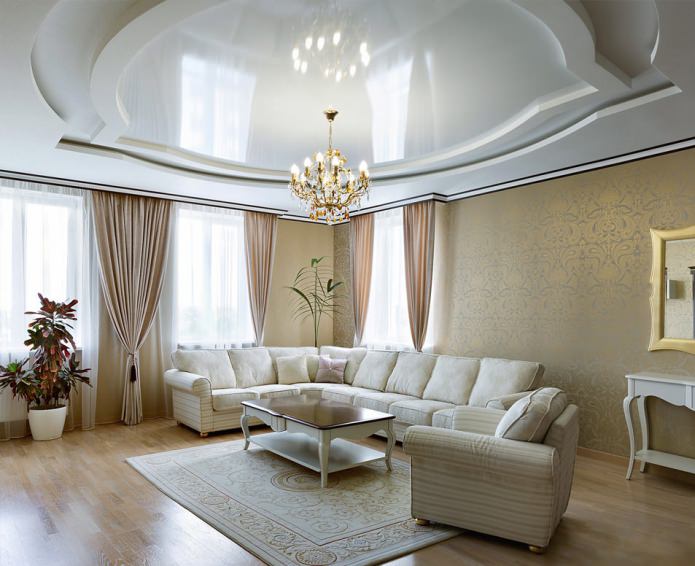
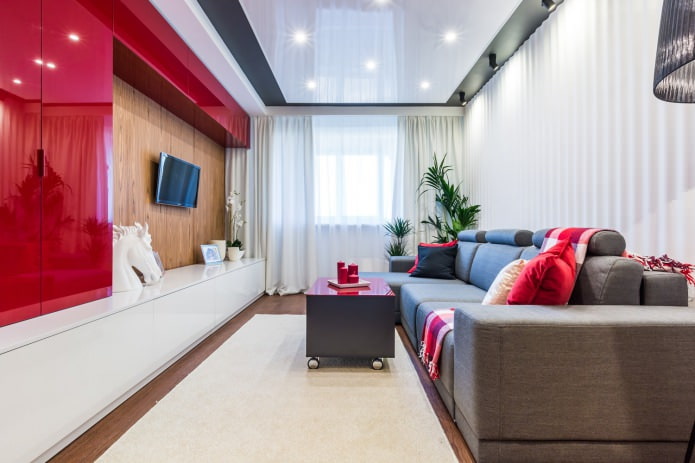

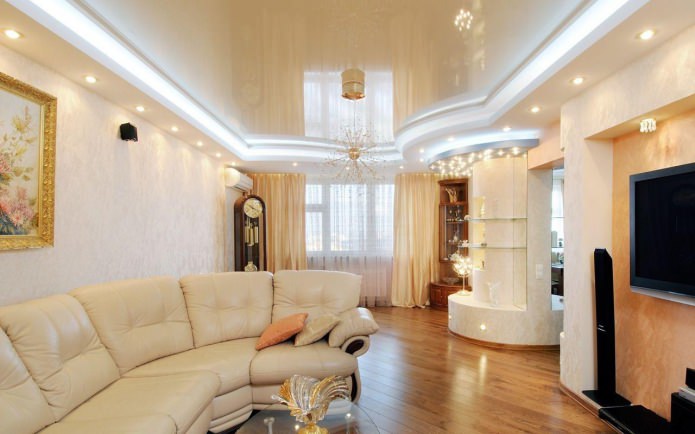
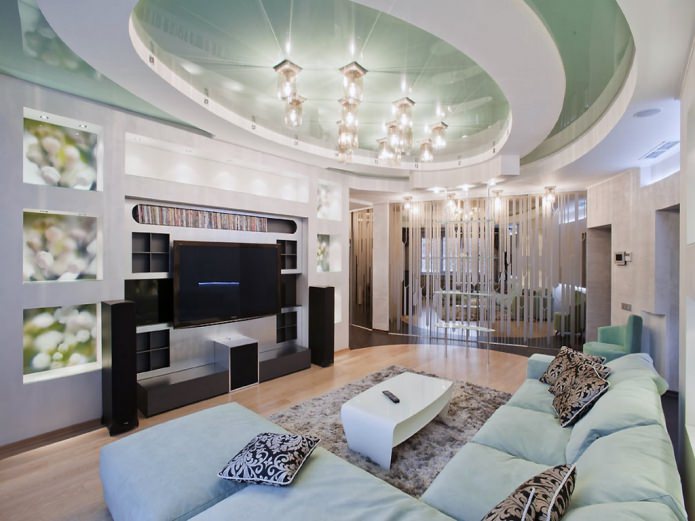
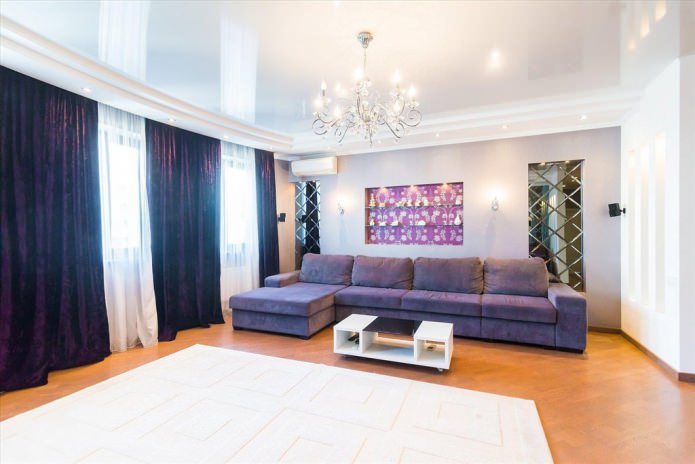
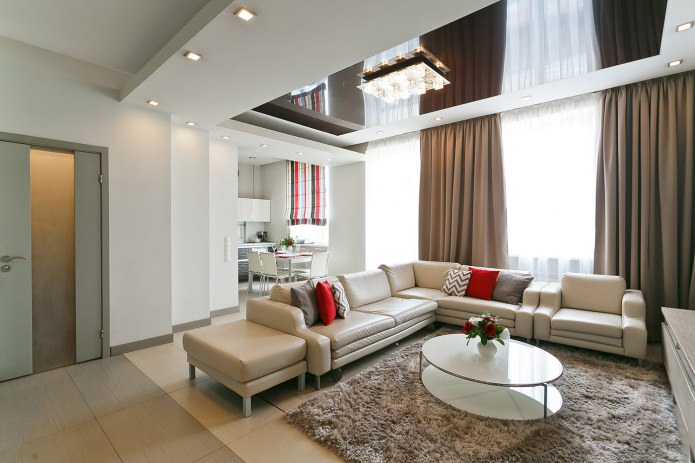
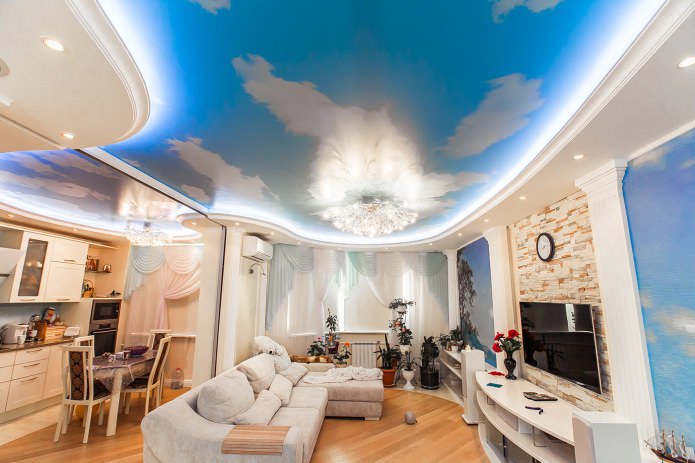

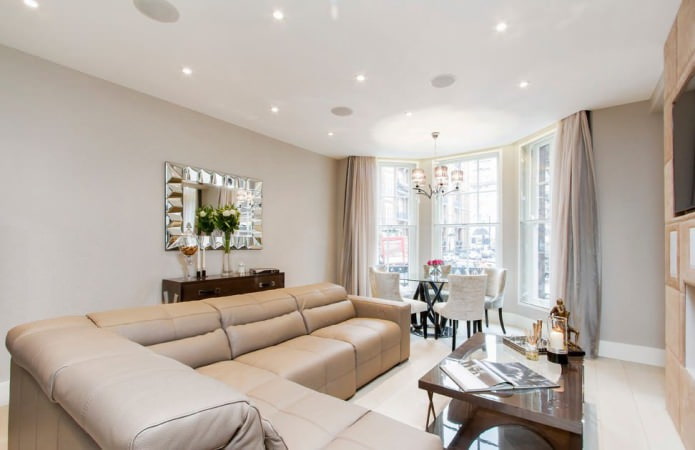
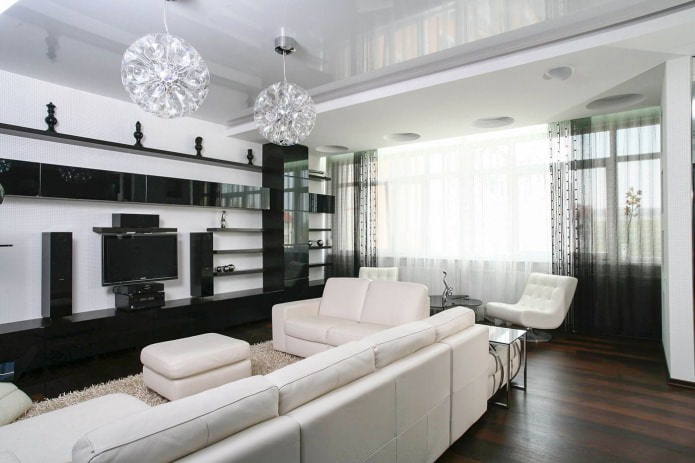
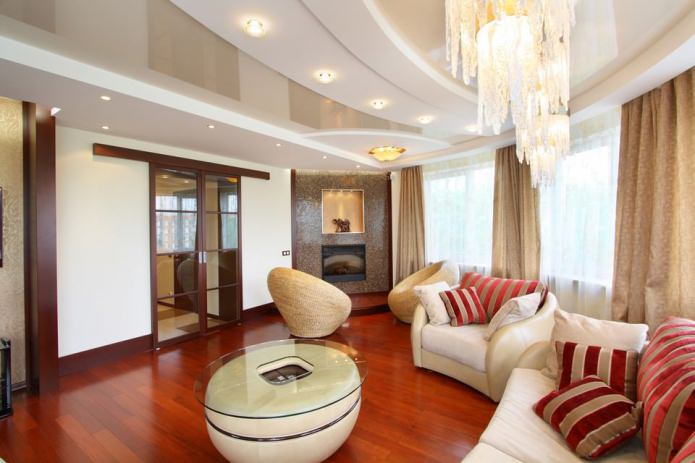

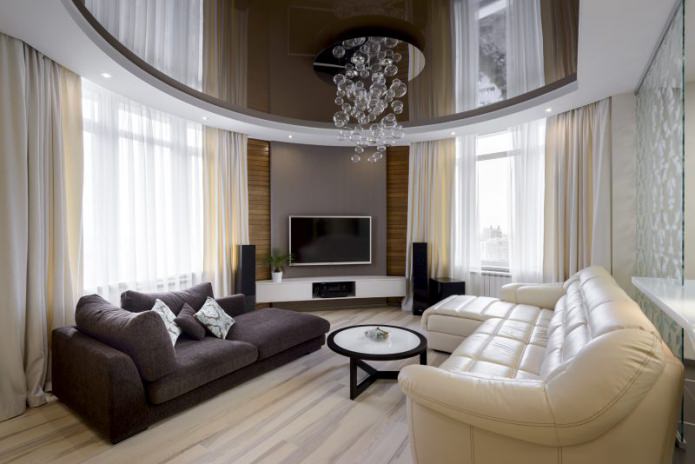
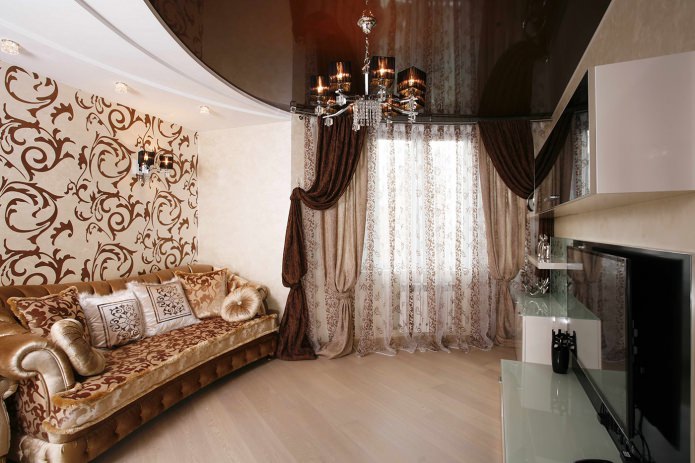
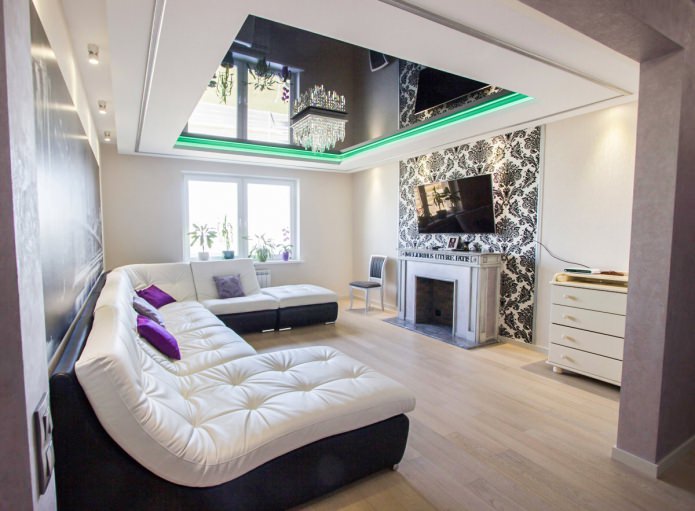
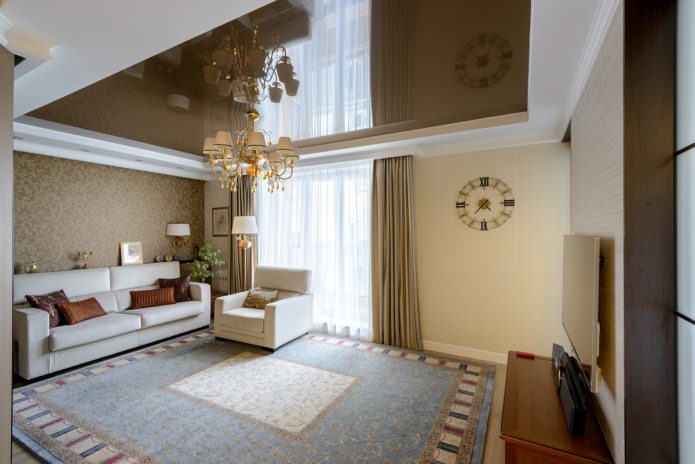

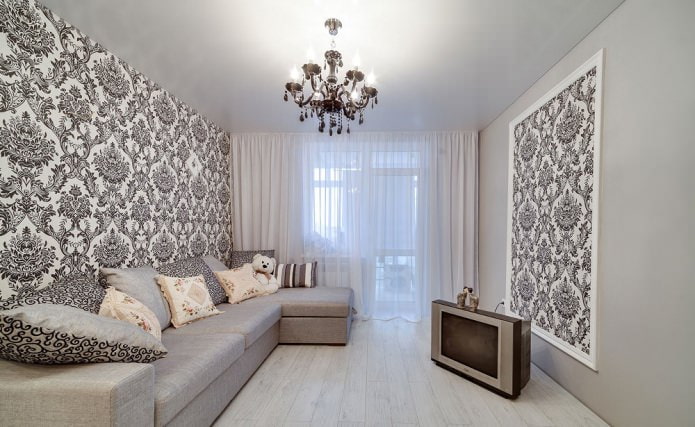
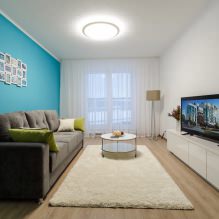
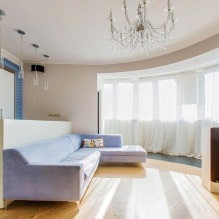
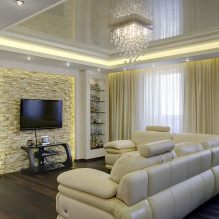
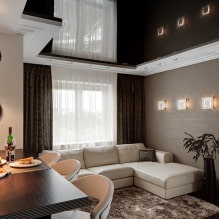
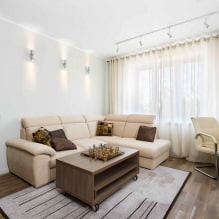
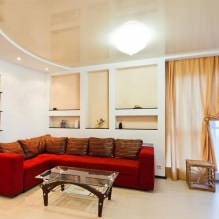
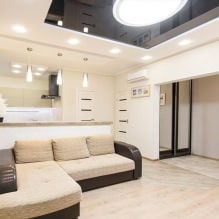
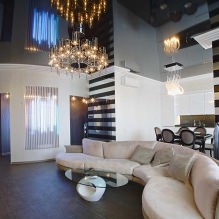
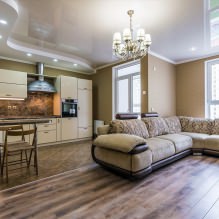
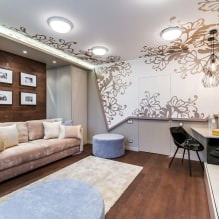

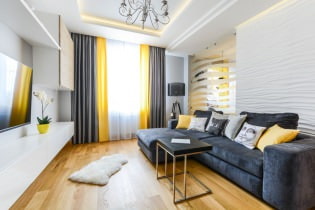 Choosing the best living room interior style: 88 photos and ideas
Choosing the best living room interior style: 88 photos and ideas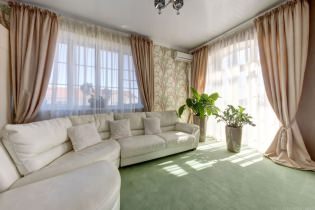 Curtains in the living room: 70 stylish photos of ideas in the interior
Curtains in the living room: 70 stylish photos of ideas in the interior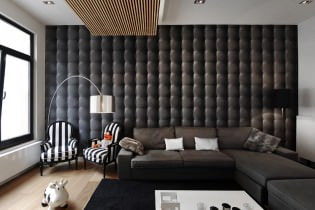 Wall decoration in the living room: choice of colors, finishes, accent wall in the interior
Wall decoration in the living room: choice of colors, finishes, accent wall in the interior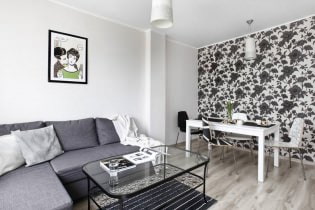 White and black and white wallpapers in the living room: 55 photos in the interior
White and black and white wallpapers in the living room: 55 photos in the interior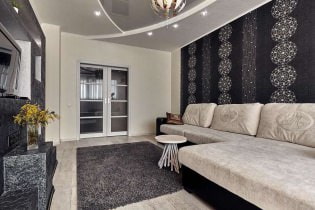 Wallpaper in the interior of the living room: 60 modern design options
Wallpaper in the interior of the living room: 60 modern design options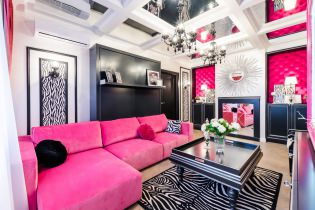 Pink living room design: 50 sample photos
Pink living room design: 50 sample photos